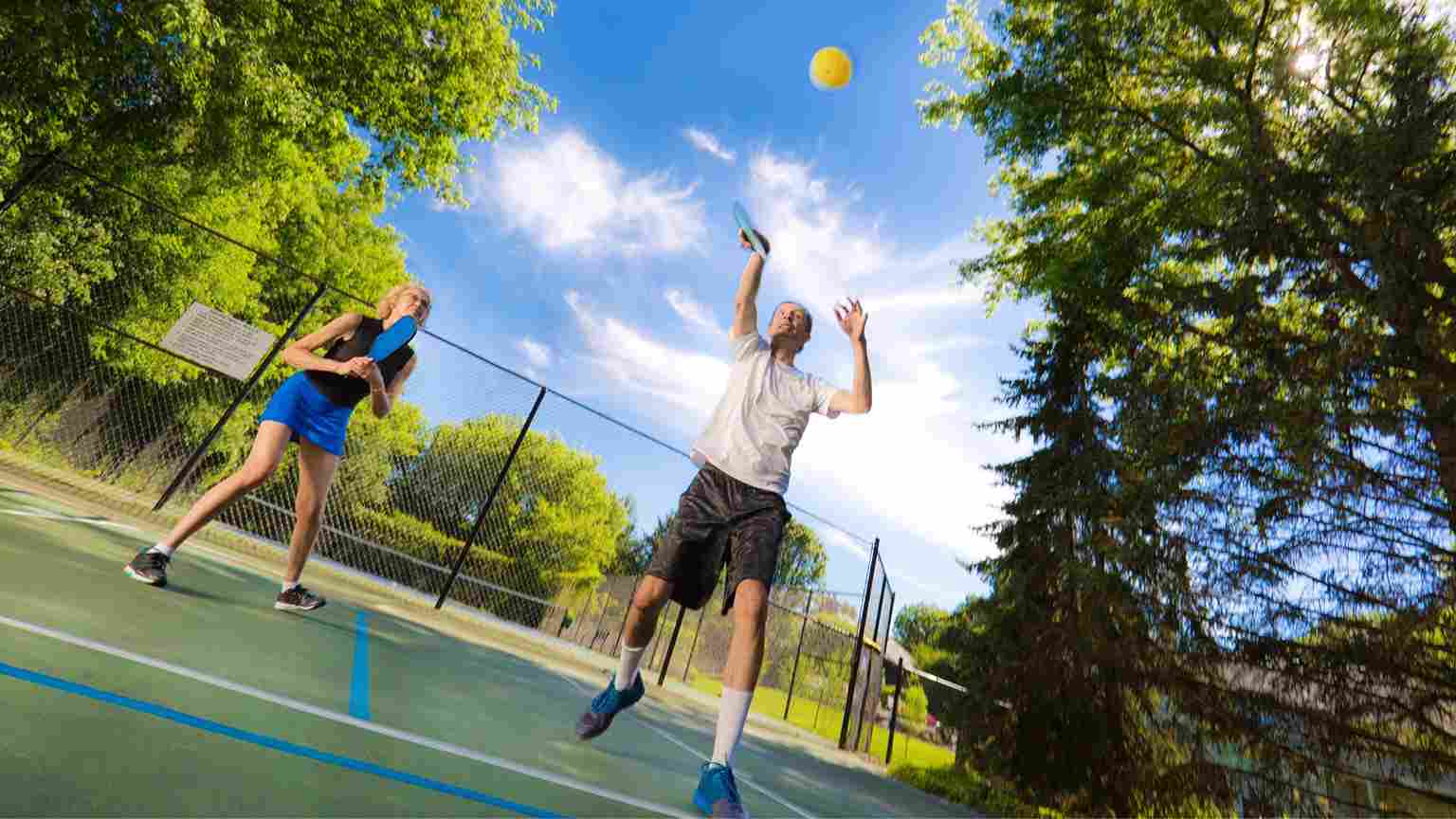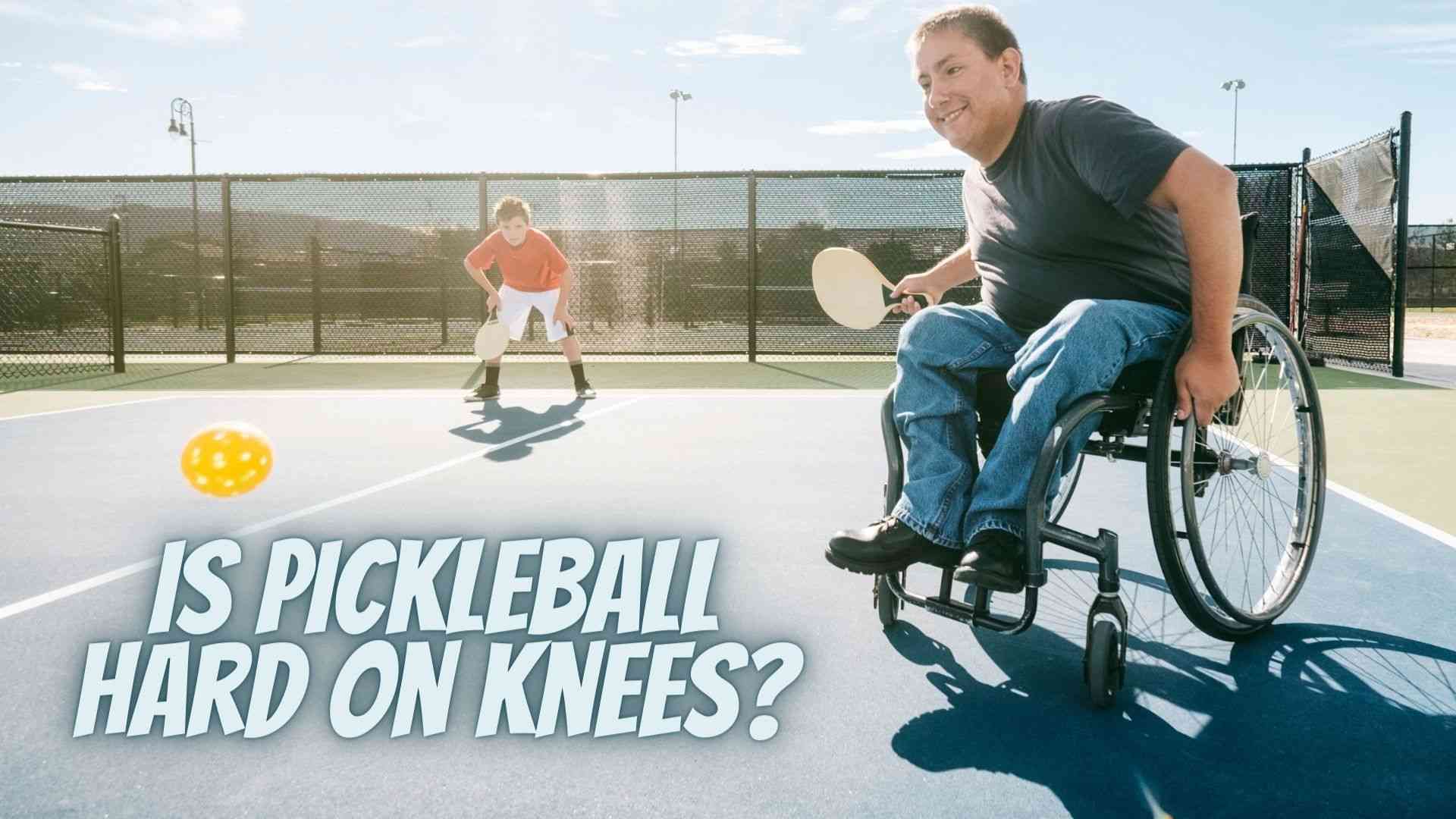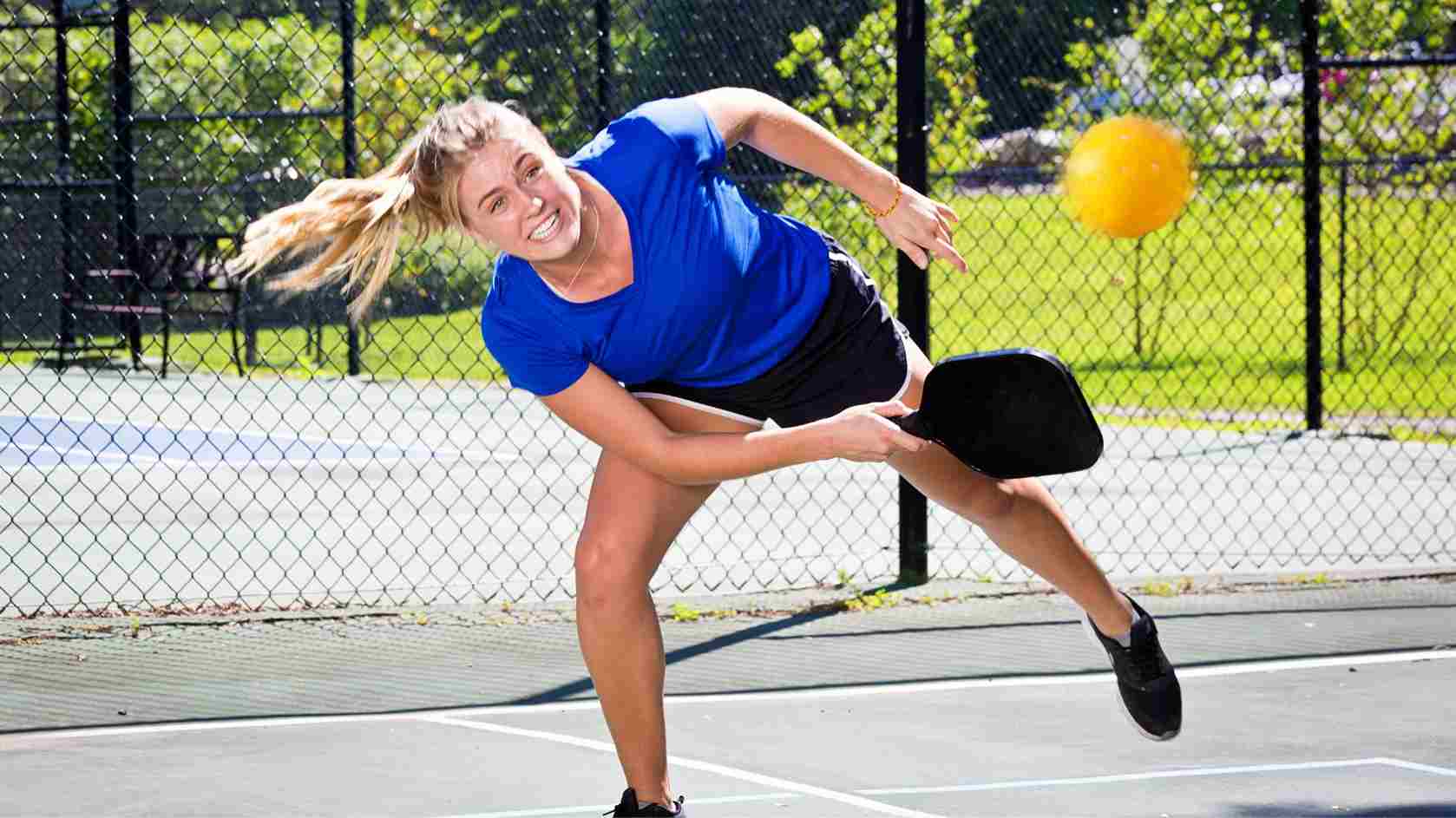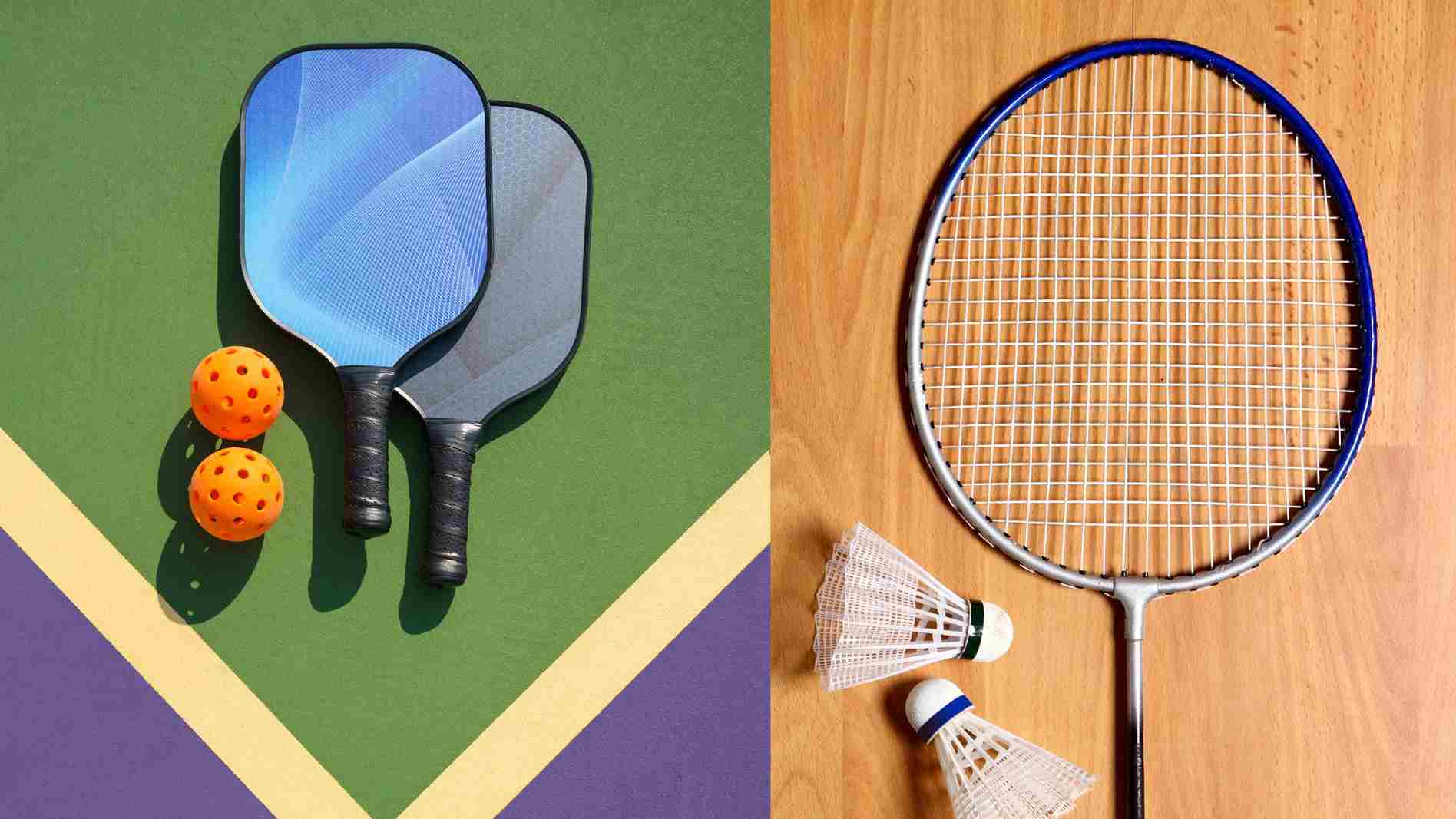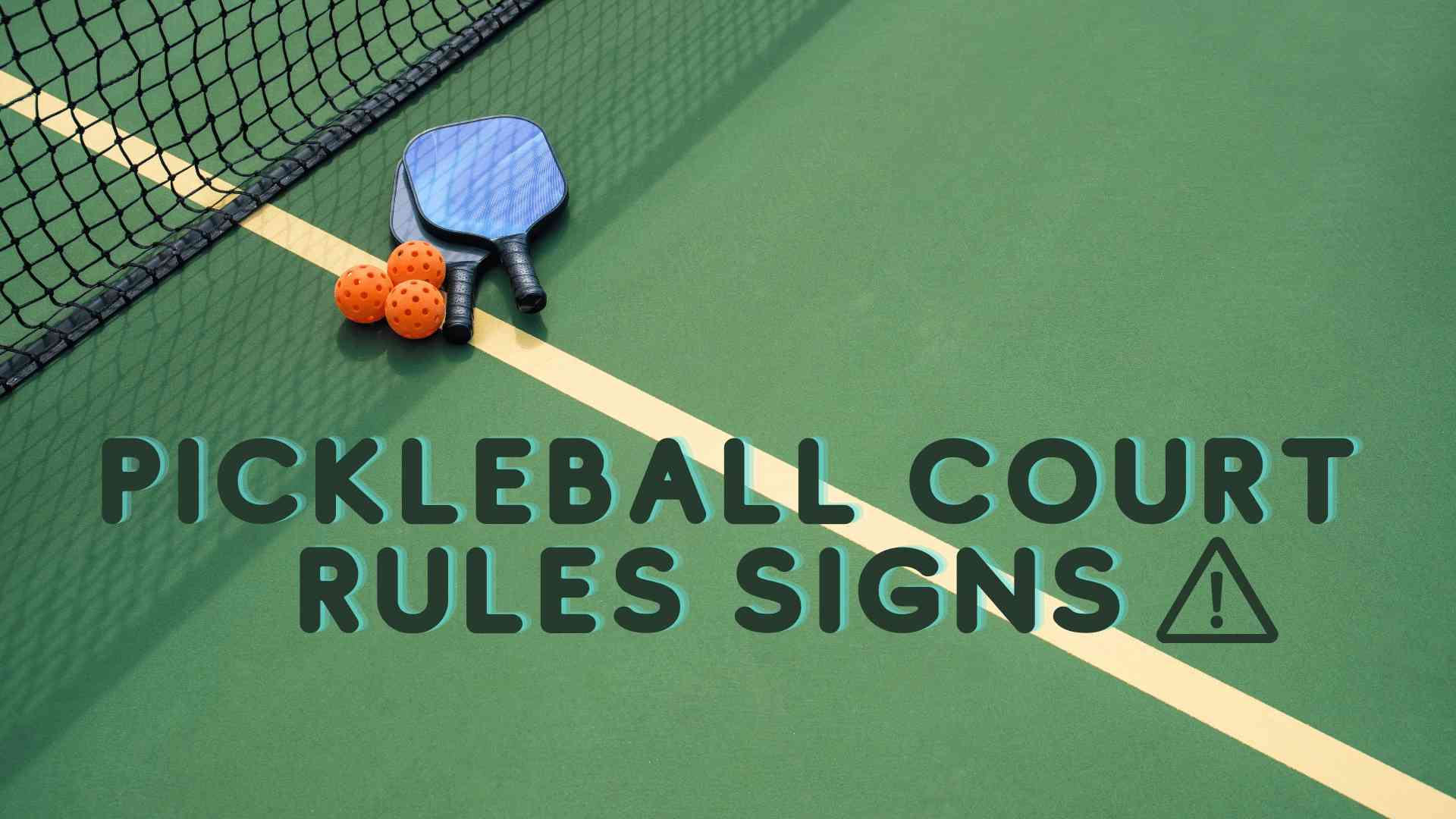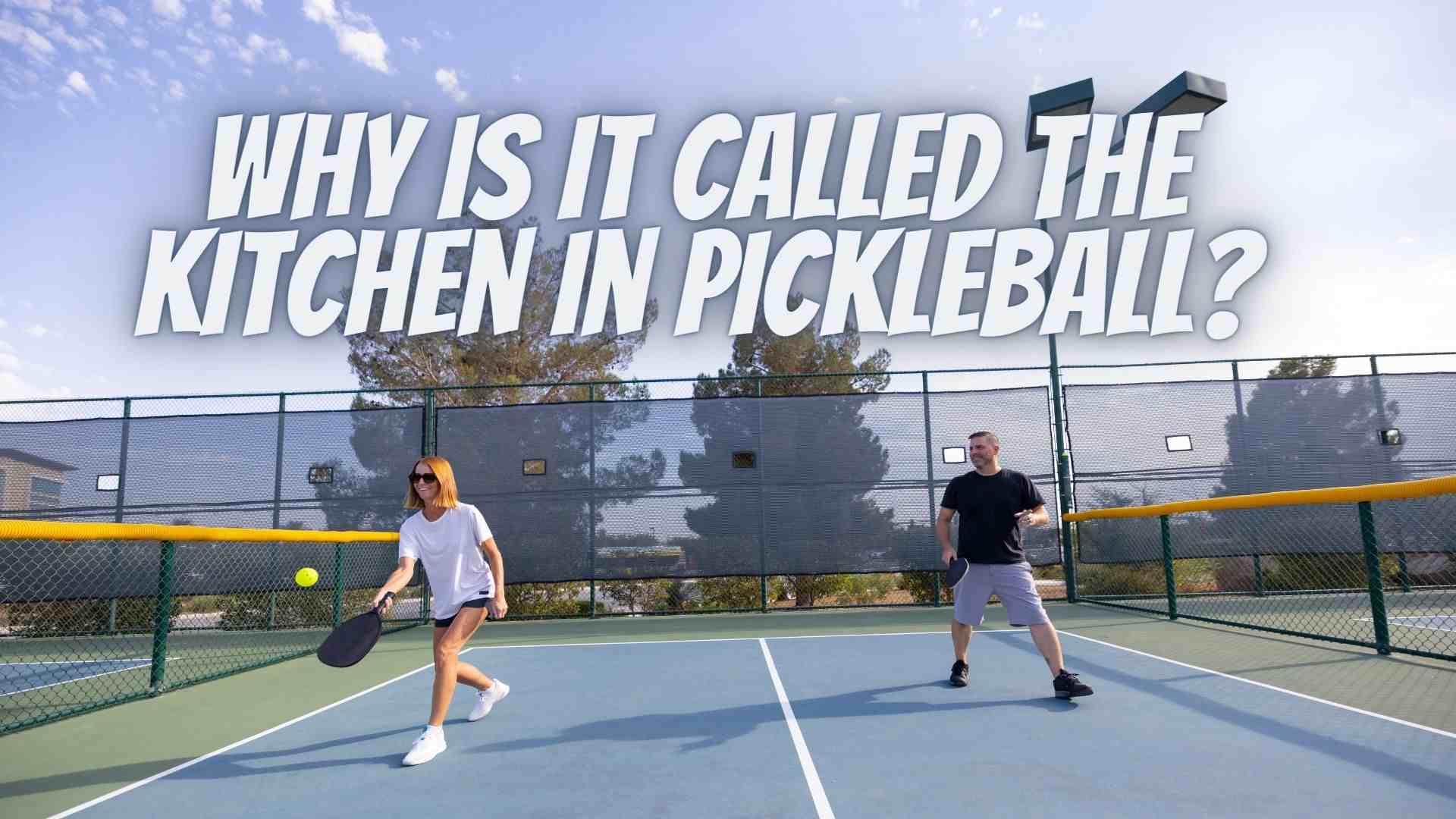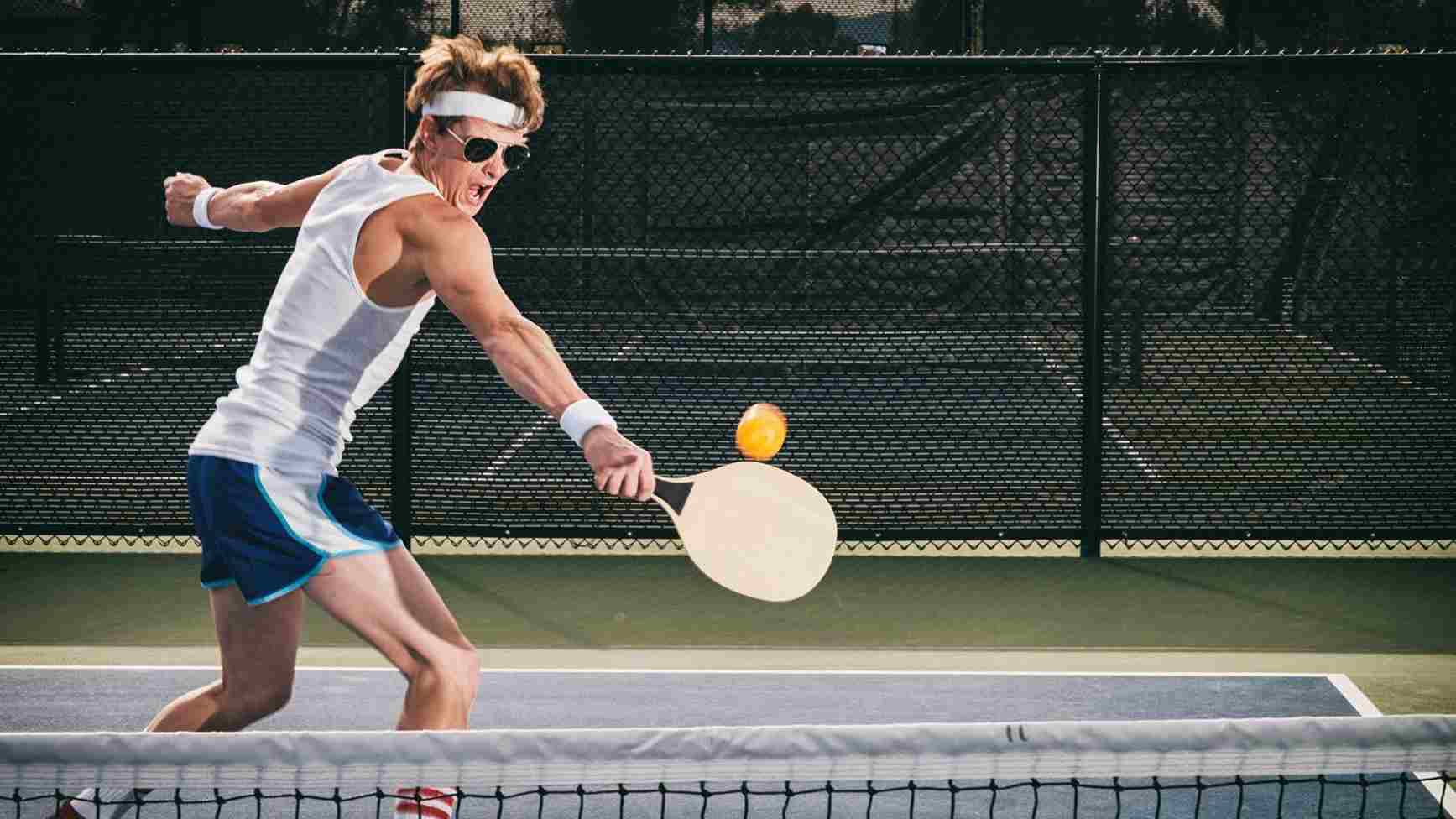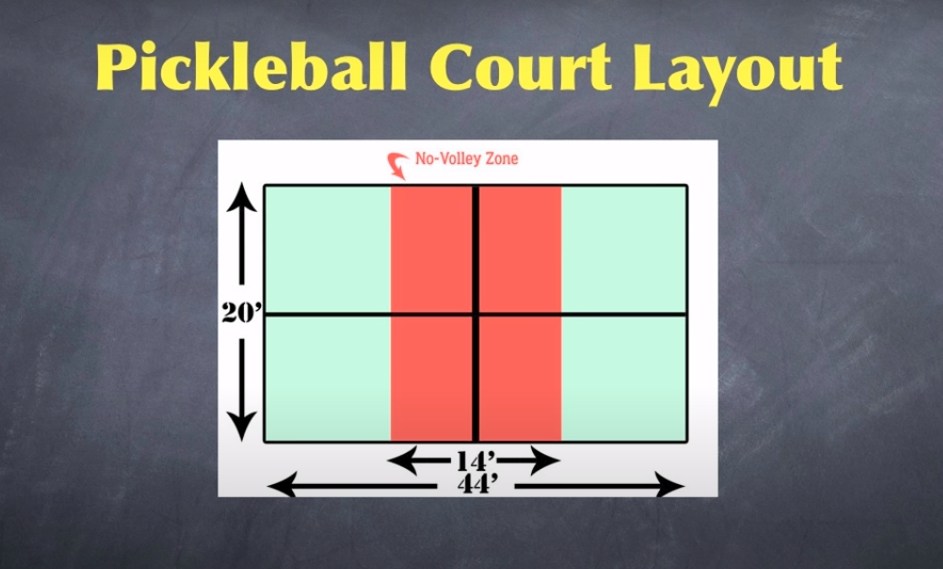
Are you new to the world of pickleball? Then you may be wondering about the pickleball court layout. Whether you’re building a court in your backyard or in a sports club, there are a few key considerations to keep in mind when it comes to pickleball court design and layout.
Pickleball is a fastly growing game that combines elements of tennis, badminton, and ping pong. It’s played on a court that’s similar in size to a doubles badminton court but with a few key differences.
In this guide, we’ll have you take a look at some important factors to consider when designing your own pickleball court and the basics of the pickleball court layout, including its dimensions, markings, and more.
Dimensions
If you’re looking to set up a pickleball court either indoors or outdoors, then first, you need to know the correct layout of the pickleball court recommended by the USAPA.

A standard pickleball court measures 20 feet wide by 44 feet long. This makes it slightly smaller than a standard doubles tennis court. However, the net in pickleball is lower than in tennis, which helps compensate for the smaller court size.
The net in pickleball is 36 inches high on the sidelines and 34 inches high in the middle. This lower height allows players to hit the ball over the net with greater ease, making for longer rallies and more exciting gameplay.
Pickleball Court Diagram
To understand the pickleball designs of one court, it is essential to actually see the pickleball court dimensions diagram properly.
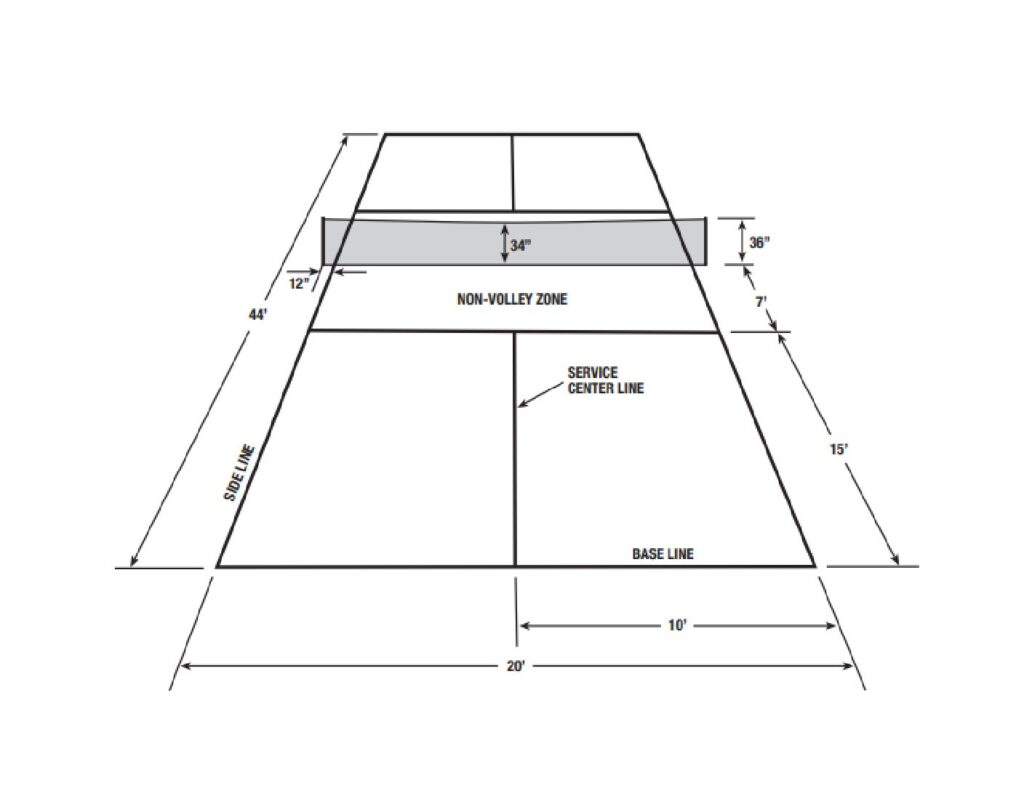
In this section, you’re provided with a visual guide to the pickleball court diagram to help you understand the various parts of the pickleball court drawing.
Markings
Now let’s look at the markings on a pickleball court. The court is divided into several different areas, each with its own purpose and set of rules.
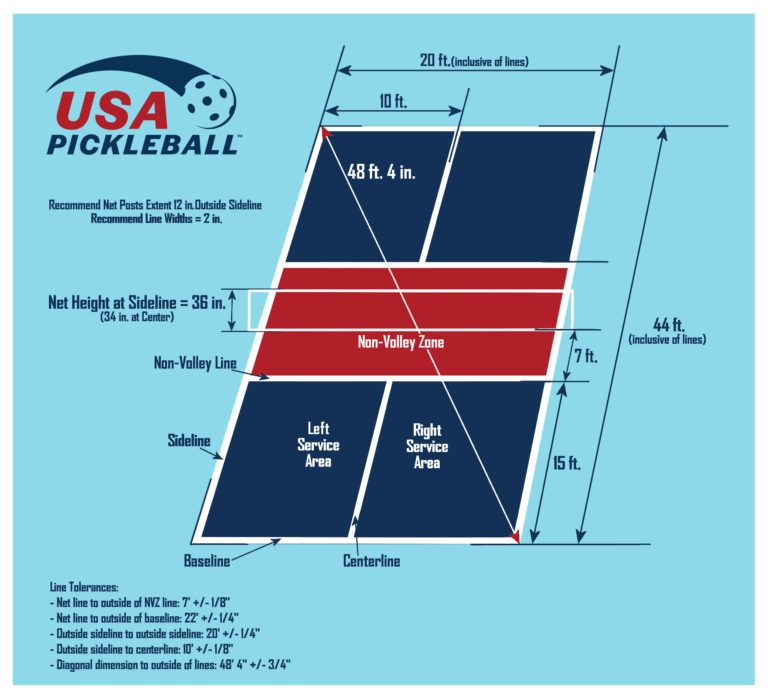
- The baseline: This is the back line of the court, where players stand to serve the ball. You are not allowed to cross the Non-volley line until you have made your first serve.
- The service area: This is the area behind the baseline where the serve must be made from.
There are two service courts that are left and right in position on each side of the court.
- The non-volley zone: This is the area within 7 feet of the net where you are not allowed to hit the ball or make the serve. This zone is also known as the “kitchen” in pickleball.
- You are not even allowed to stand on the pickleball court, and neither of your belongings or clothes can touch the pickleball court when volleying.
- The sidelines: These are the side boundaries of the court. They are made when baselines of the court from opposite ends meet with each other.
- The centerline: This line divides the court in half, making separate service areas for players. This also facilitates at the time of tournaments when four players alternatively play pickleball at the same time.
- Additionally, the centerline is marked with a solid line that extends from the baseline to the non-volley zone. This line divides the court in half and is used to determine which side of the court each player must stay on during play.
All of these areas are marked on the court using different colored lines. It’s important to use the correct colors for the court markings, as this can impact the visibility of the lines.
The International Federation of Pickleball recommends using a 2-inch wide solid white line for the sidelines and baselines, a 1-inch wide yellow line for the non-volley zone, and a 2-inch wide red line for the centerline.
Also, keep in mind that the surface should be smooth and level, with good traction for players. A concrete or asphalt surface is recommended for outdoor courts, while a hardwood or synthetic surface may be better for indoor courts.
Multiple Pickleball Court Layouts
Given below are multiple pickleball court layouts for converting a tennis court into different pickleball courts.
One Pickleball Court on Tennis Court
Two Pickleball Courts on Tennis Court
Four Pickleball Courts on Tennis Court
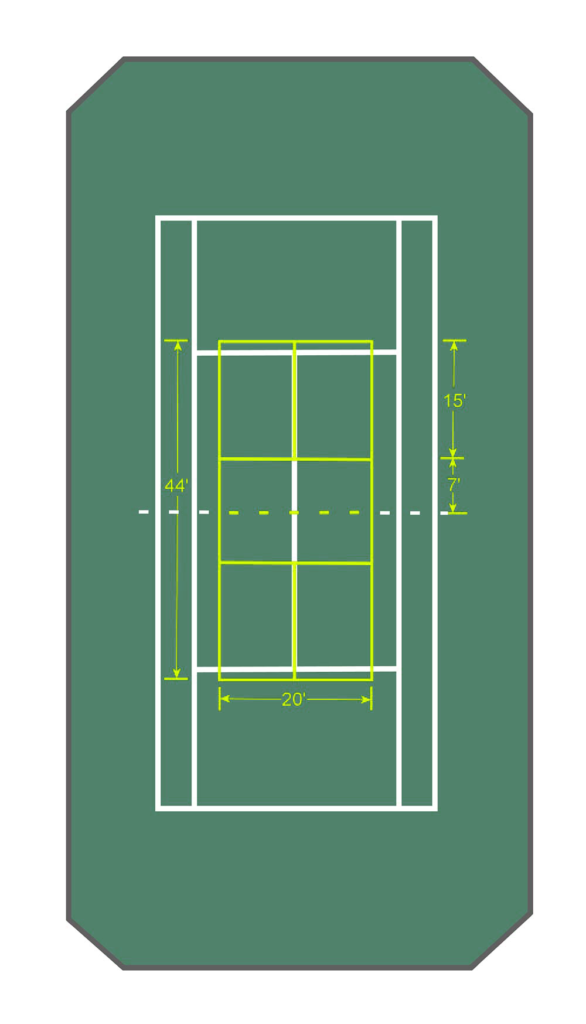
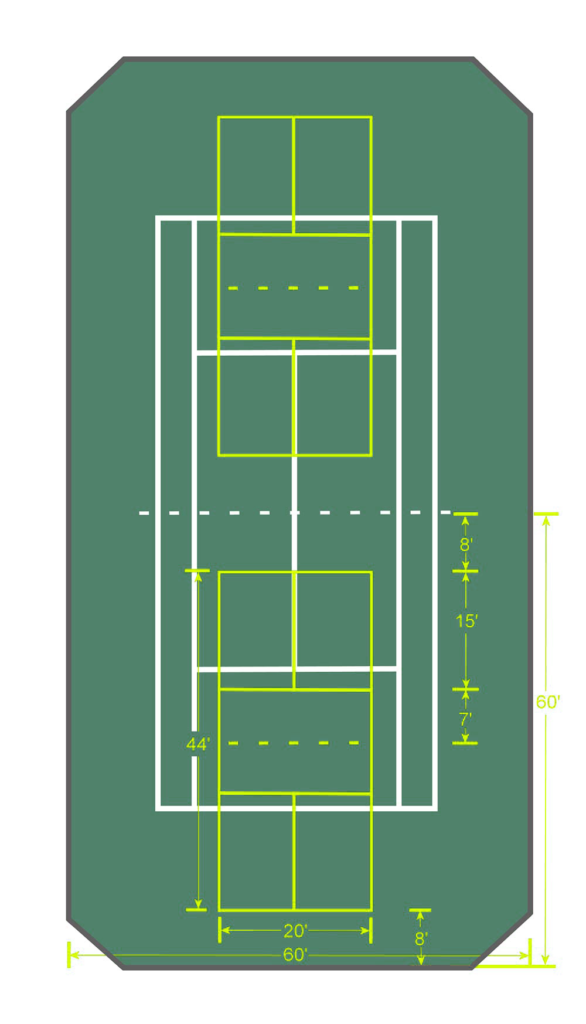
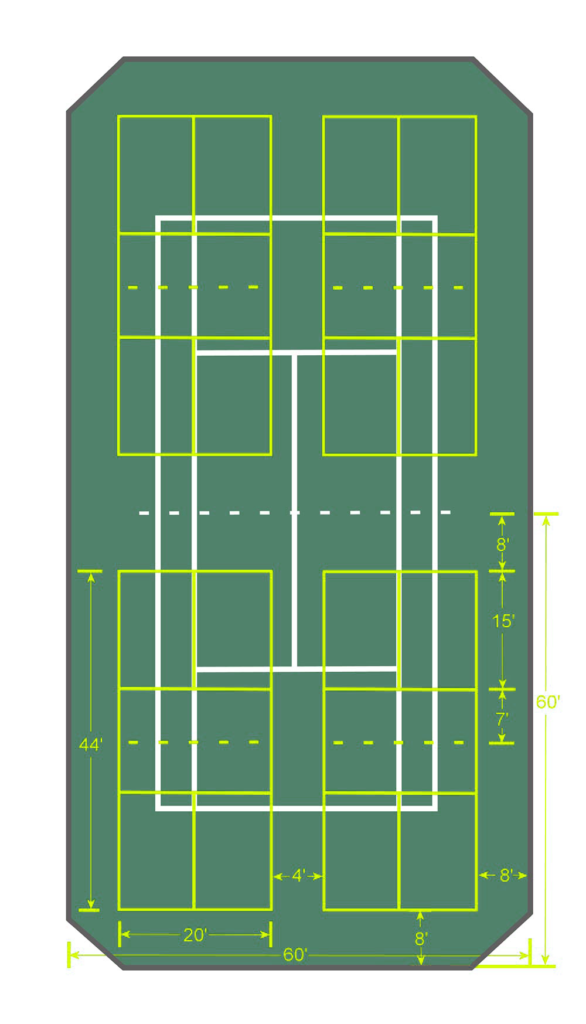
Existing Pavement Conversions
Several examples of existing payment conversions are shown below, including pickleball printable diagrams that show the layout for basketball courts and inline hockey rinks (taken from that section of the USA Pickleball Courts Construction and Maintenance Manual).
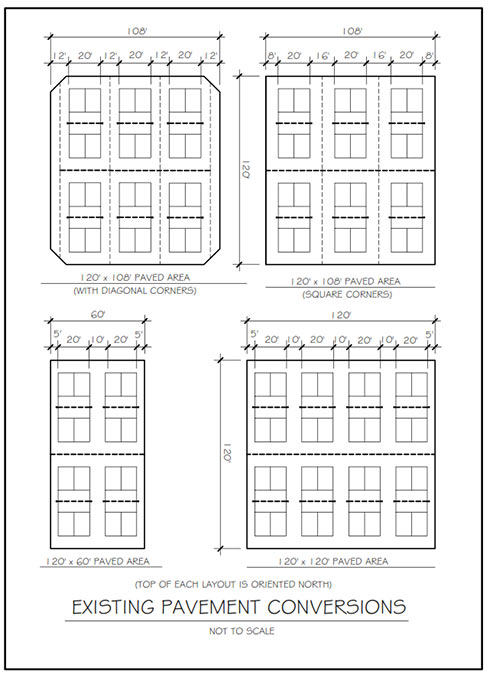
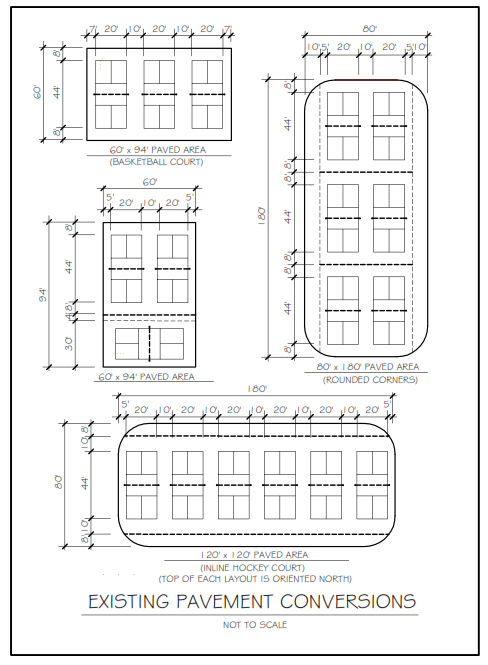
FAQS: Pickleball Court Design
What are the Design Standards for a Pickleball Court?
The standard dimensions for a pickleball court are 20 feet wide by 44 feet long, with a net height of 36 inches at the sidelines and 34 inches at the center. The court should also have appropriate markings and a smooth, level surface with good traction as a design standard for a pickleball court.
What Color is Best for a Pickleball Court?
The USAPA recommends using light colors like blue or white for outdoor courts, as these colors provide good contrast with the color of pickleball, which is mostly white, yellow, orange, or green and are easy on the eyes. For indoor courts, darker colors like blue, green, and black may be more appropriate to reduce glare.
What are the 3 Key Things you Should Focus on In Pickleball?
The three key things to focus on in pickleball are proper footwork, effective shot selection, and good court positioning. By mastering these skills and practicing pickleball, you can improve your overall game and become more successful on the court.
Conclusion: Pickleball Court Design
And there you have it, a brief overview of the pickleball court layout. If you’re a seasoned player or just starting out, understanding the pickleball court specs is essential to playing the game properly.
With this guide, you should have a good grasp of the dimensions and markings of a pickleball court. So grab your paddle and get out there!







